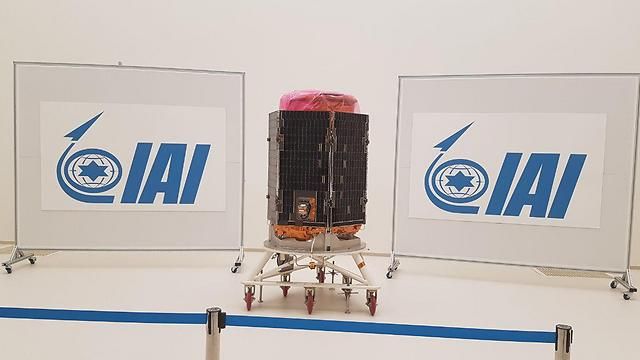Israel's First Environmental Research Satellite - VENµS
Published on by Water Network Research, Official research team of The Water Network in Technology
The satellite named Venus will monitor fields and plots of land from space for environmental research purposes, while monitoring the state of land , vegetation, agriculture and water quality.

Venus satellite (Photo: Yaron Druckman)
After its completion, Israel bids farewell to the Venus satellite, the first Israeli satellite intended for environmental research, which is set to be launched on August 1 from French Guiana. The satellite is planned to operate for four years and three months.
The satellite will monitor fields and plots of land from space for environmental research purposes, while monitoring the state of land, vegetation, forestation, agriculture, quality of water reservoirs and more. Venus is equipped with a special camera that can absorb details on Earth.
The satellite has a special camera that is able to see details, some of them even invisible to the naked eye. It will photograph large swathes of land, each covering 700 square kilometers and supply scientists with dozens of images every day. is equipped with an innovative electric propulsion system manufactured by Rafael for operation in a special orbit.
It is meant for monitoring agricultural land from space for environmental studies, following the condition of forests and plants on land and studying the quality of bodies of water. 12 wavelengths, including details that are not visible. The satellite will photograph large areas and provide researchers with dozens of images each day, each of which will cover about 700 square kilometers.
Once every two days, the satellite will produce photographs of the whole of Israel for use by the researchers. The satellite will weigh 265 kg upon launch and will enter Sun-synchronous orbit within two days of the launch.
In an official ceremony held Thursday, Israel Aerospace Industries (IAI) handed the Venus satellite to the Israeli Space Agency at the Ministry of Science and its project partner in the French Space Agency (CNES). The satellite will be integrated with the Arianespace launcher and prepare for launch from French Guiana.
The satellite, a joint project of the Israeli Space Agency and the French Ministry of Science and Space, was built in recent years at a space factory belonging to the IAI, together with Elbit, which developed the telescope and Rafael, which developed the propulsion system.
Read more: Ynet News
Media
Taxonomy
- Monitors
- GIS & Remote Sensing Technology
- Impact Assessment
- GIS
- Water Monitoring
- Environment
- Monitoring & Control
- Impact
- Environmental Research
- Satellite